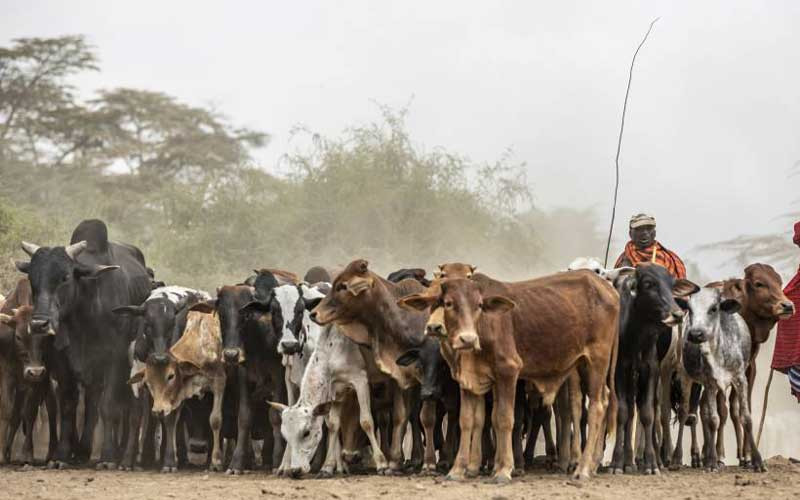
AFRICA is contending with a climate crisis it did not create without sufficient recognition for the unique rights and needs of the world’s youngest and fastest-growing population.
Not only is the continent least responsible for reducing greenhouse gas emissions, having historically produced just a tiny fraction, but it is also disproportionately impacted by the consequences of emissions generated elsewhere.
And when climate disasters such as cyclones in Mozambique and Malawi, or droughts in the Horn of Africa strike, the subsequent humanitarian response diverts vital funds that could have otherwise supported public health, education and food security.
Such extreme events take an enormous toll on Africa’s primary industries, including crop and animal agriculture, with the livestock sector alone losing US$2 billion from the ongoing drought.
It would, therefore, be preposterous to hold any of these sectors directly to account for curbing climate change — let alone one that provides food and livelihoods for hundreds of millions amidst growing climate risks.
Yet this is precisely the scenario that unfolds when the global climate debate around the role of livestock results in calls for blanket reductions of herd numbers and wholesale dietary shifts away from meat.
Broad campaigns for a transition away from animal agriculture and towards plant-based diets without qualifying regional differences overlook the severe levels of undernutrition in parts of the world caused by inadequate intake of animal-source foods.
This risks creating the impression that Africans, who consume as little as seven kilograms of meat a year, must give up vital yet underconsumed sources of protein and micronutrients to mitigate emissions mostly generated elsewhere.
- Africa hit hard by high e-waste pollution
- Africa is paying dearly for the Russian/Ukraine conflict
- Pathways for repurposing resources are long overdue in developing countries
- Poor co-ordination makes it difficult to see where African food systems are going
Keep Reading
It is critical that regional and even national distinctions are made when making the case for dietary and production changes. Meat consumption and production practices vary enormously around the world.
Where meat is over-consumed and produced unsustainably, we recognise this needs to change — not only to bring down emissions but to improve health standards.
But applying this argument globally misses the livestock sector’s outsized and fundamental role in the development of low-income countries, including those across Africa.
And this blind spot is made all the more unjust by the fact that those in the Global North have both driven up global emissions and failed to meet commitments to Africa for climate-related development finance.
Livestock keeping offers African countries a gateway to the food security and economic growth enjoyed elsewhere while also enabling the climate adaptation made necessary largely by the actions of others.
Investing more climate funding to support Africans farmers and animals adapt to new extremes is an enormous opportunity for a climate-resilient economy. And it is also a matter of climate justice.
Unlike many other parts of the world, Africa is facing exponentially more mouths to feed in the decades ahead just as climate change makes farming harder and riskier than ever. - Huyam Salih, Appolinaire Djikeng
Investing in human resources: A catalyst for health sector growth in Zim
zIMBABWE has an annual average population growth of 1,5% and high burden of communicable and non-communicable diseases.
The rising demand for healthcare services has put pressure on available health workforce.
In addition, health systems for low-income countries like Zimbabwe face challenges in critical areas of human resources for health, such as quantity, size, absorption of health workers, geographic and health facility level distribution of health workers, skill mix and health workforce management capacity.
It is with this background that the World Health Organisation (WHO) agreed to a collaborative initiative with Africa University with the aim to deliver evidence-based recommendations for fortifying health systems and improve training of human resources for health at training level.
“We welcome and appreciate the opportunity to collaborate with WHO and also converse on areas such as research on NCDs, support for scholarships, and provision of training equipment which are key priorities for our institution,” said Africa University dean of College of Health, Agriculture & Natural Sciences, professor Christian Ezeala.
The collaboration between Africa University and WHO represents a significant step towards addressing the healthcare challenges faced by countries with high disease burdens in Africa.
Through such collaborations, academia can understand the current trends in health labour market and provide valuable insights into the dynamics of the health workforce.
Research indicates that investing in human resources is a key driver in strengthening health systems and improving healthcare delivery, particularly in countries grappling with high disease burdens.
This collaboration will enable development of targeted strategies to address shortages, improve distribution, enhance skill mix, retain health workers and mitigate migration.
This collaborative effort will contribute to building stronger and more resilient healthcare systems that can effectively combat prevalent diseases and promote the well-being of communities in Zimbabwe and across the continent.
The recent health labour market analysis conducted by WHO, as presented by Healthier Populations Cluster Lead Dr Trevor Kanyowa on behalf of the representative to Zimbabwe, professor Jean-Marie Dangou, highlighted a concerning trend.
Despite an annual production of 150 000 new health workers in Africa, the region is projected to face a health worker shortage of 5,3 million by 2030.
For Zimbabwe, the number of public sector health workers has reduced by at least 4 600 since 2019 despite increased recruitment, due to attrition.
He added that an estimated US$960 million is required to sustain a health workforce in Zimbabwe that can respond to at least 80% of the health needs.
Following the analysis, recommendations were made to establish regulatory measures and non-monetary incentives for the health workforce, aimed at reducing the continuous depletion of this critical resource.
The government of Zimbabwe started implementing the recommendations.
“We are already observing positive outcomes,” noted Dr Kanyowa.
“A new health workforce policy has been developed, increasing study leave slots for specialist training of health workers. Furthermore, the training of Primary Care Nurses has been expanded from 30 to 200 per annum to fill the gaps created by the emigration of nurses and midwives.”
WHO reaffirms its commitment to support the health system strengthening in Zimbabwe and even beyond.
This includes collaboration with academic institutions, which are responsible for production of human resources for health. - WHO











